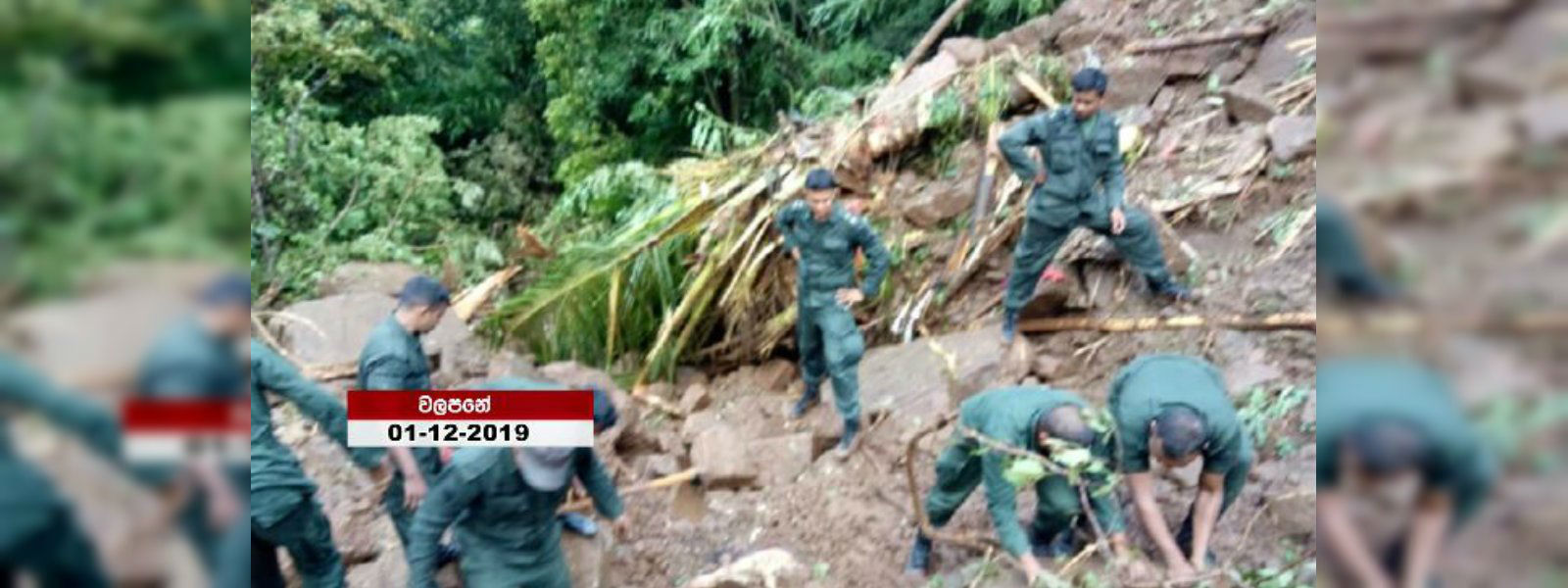.webp)

Walapane tragedy: Locals call for nearby quarry to be shut down
COLOMBO (News 1st) - A group of Bhikkus and locals protested against the stone quarry, which is said to have to be a contributory factor for the landslide that occurred in Walapane, claiming the lives of four. The remains of one more deceased is yet to be recovered.
The victims were 58-year-old, G.G.Ran Banda, his wife 52-year-old Biso Manika and their 17-year-old female relative. The deceased couple's 16-year-old son, who is claimed to have been inside the house at the time of the incident, is still missing.
News 1st recalls, how Ran Banda shared his views with us, about this life-threatening situation several years ago.
The stone quarry located less than 100 meters away from the house, in which Ranga Bandara lived, still continues to operate.
Locals charge, the drilling and the use of explosives at the quarry resulted in the earth embankments to erode, which contributed to the devastating landslide that claimed the lives of innocent people.
In 2007, a research conducted by the National Building Research Organization had identified the weak nature of the earth in this area and had labelled this area with a high risk of landslides.
The National Building Research Organization points out, though residents were informed to evacuate this area, they did not receive a positive response.
However, the NBRO had granted permission for a quarry to operate in the same area that they had labelled as a high-risk landslide area.
The NBRO said, the quarry and its operations do not affect the earth, and permission was granted for the quarry, following the recommendations of the respective companies involved in the quarrying.
Pubudu Jagoda, Front Line Socialist Party:
"In 2007, a minor landslide occurred in this area. The NBRO then labelled this area as a high-risk landslide area. During this time, the Chinese company named Yuan Construction Engineering was to construct the Ragala-Rikillagaskada road and several other nearby roads.
They were supposed to bring in rock from outside. But after identifying this mountain, they started to excavate and source rock from this mountain."
He added that initially, the NBRO labelled the area as a high-risk area, but when the Chinese company came into the picture and threw money, they changed the outlook of the report and declared the zone as safe for quarrying.
He went on to note that using the report, the Central Environmental Authority issued an environmental license and the District Secretary then granted permission to the Chinese company to operate the quarry.
"On top of all of that, the Geological Survey and Mines Bureau disregarding all environmental reports, issued a license. The day before the landslide occurred, about 50 to 55 bores were used at the quarry. They now claim its a natural disaster" he concluded.
Amidst such a backdrop, locals of the Malapattawa village claim the walls of their houses have cracked due to the drilling and the use of explosives at the quarry.
The permit to carry out operations at the quarry was issued to a Chinese Company, that constructed a section of the Walapane - Kandy main road between 2011 and 2015 while carrying out operations at the quarry.
This Chinese Company which is currently engaged in construction activities on the Ragala-Uda Pussellawa road had attempted to resume operations at the quarry since last year, however, it was deemed futile due to massive protests by the locals.
Disregarding the protests and taking advantage of their legal rights, the Chinese Company resumed operations at the quarry on the 1st of March this year.
Meanwhile, The Embassy of the United States for Sri Lanka, issued a press release, regarding the recent equipment donated to the National Building Research Organization in order to detect and monitor areas prone to landslides.
It reads, The United States donated landslide monitoring instruments to Sri Lanka’s National Building Research Organization also known as the NBRO to more effectively manage the risk of landslides in Nikgaha, Kalutara. As part of the initiative, engineers and geologists from the U.S. Geological Survey also known as USGS, visited Sri Lanka from the 5th of November to the 15th of November to partner with Sri Lanka’s scientists on the installation and use of the equipment, which will enable NRBO staff to quickly identify areas vulnerable to landslides and avert the loss of life and property.
U.S. Ambassador to Sri Lanka Alaina B. Teplitz said, “Better preparedness will help save lives,” and “This equipment will enable NBRO to issue targeted regional landslide warnings, which are crucial for rural communities.”
Worth Rs 4mn, the equipment will enable the NRBO to remotely monitor groundwater levels and rainfall in areas at risk for landslides.
The USGS team also led workshops for the NBRO staff on improving their skills in identifying landslide-prone areas and the role scientists can play during disaster response.
Other Articles
Featured News





.png )
-820827_550x300.jpg)


-820802_550x300.jpg)
-820796_550x300.jpg)





-819380_550x300.jpg)


-812087_550x300.jpg)
-810262_550x300.jpg)
















.gif)